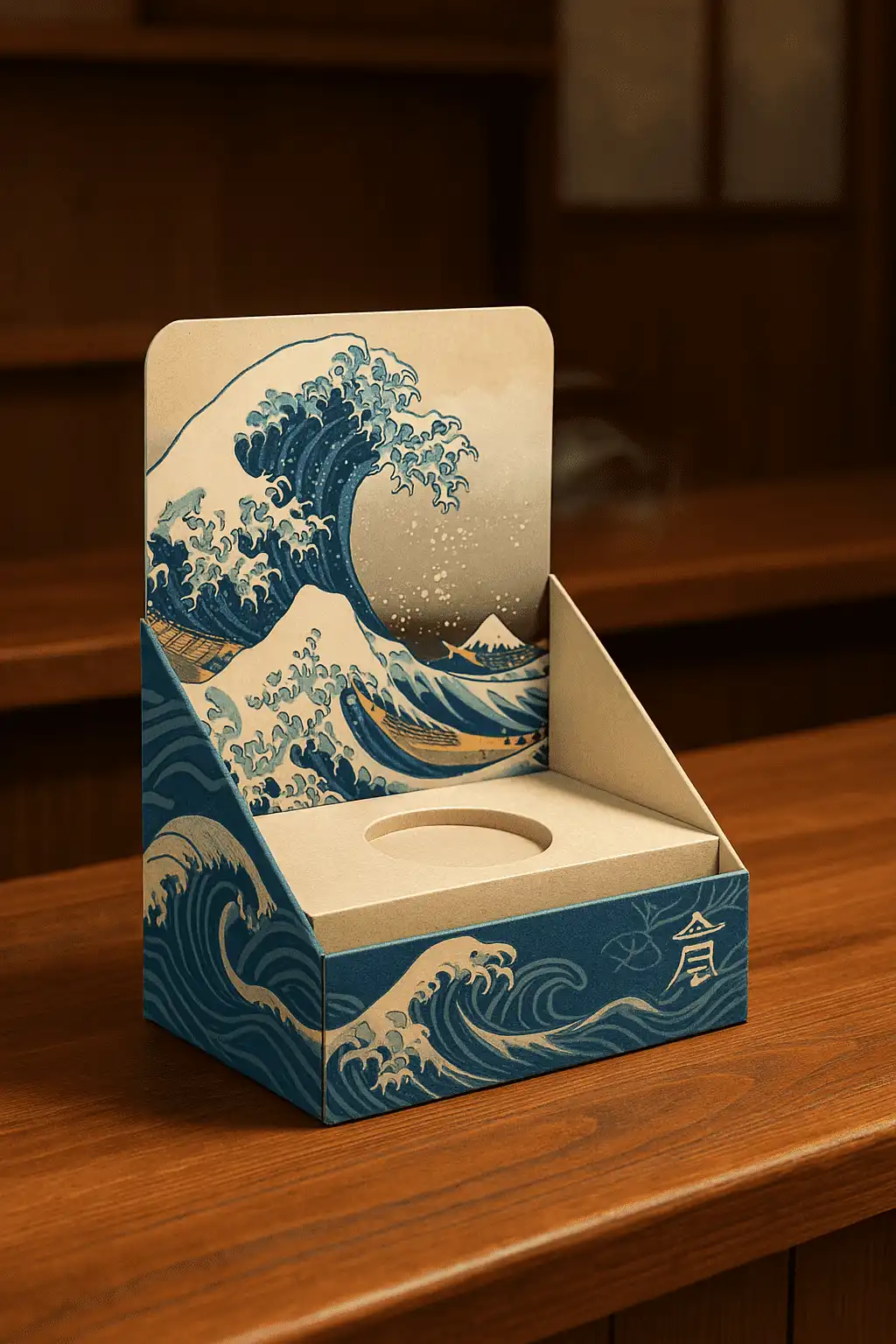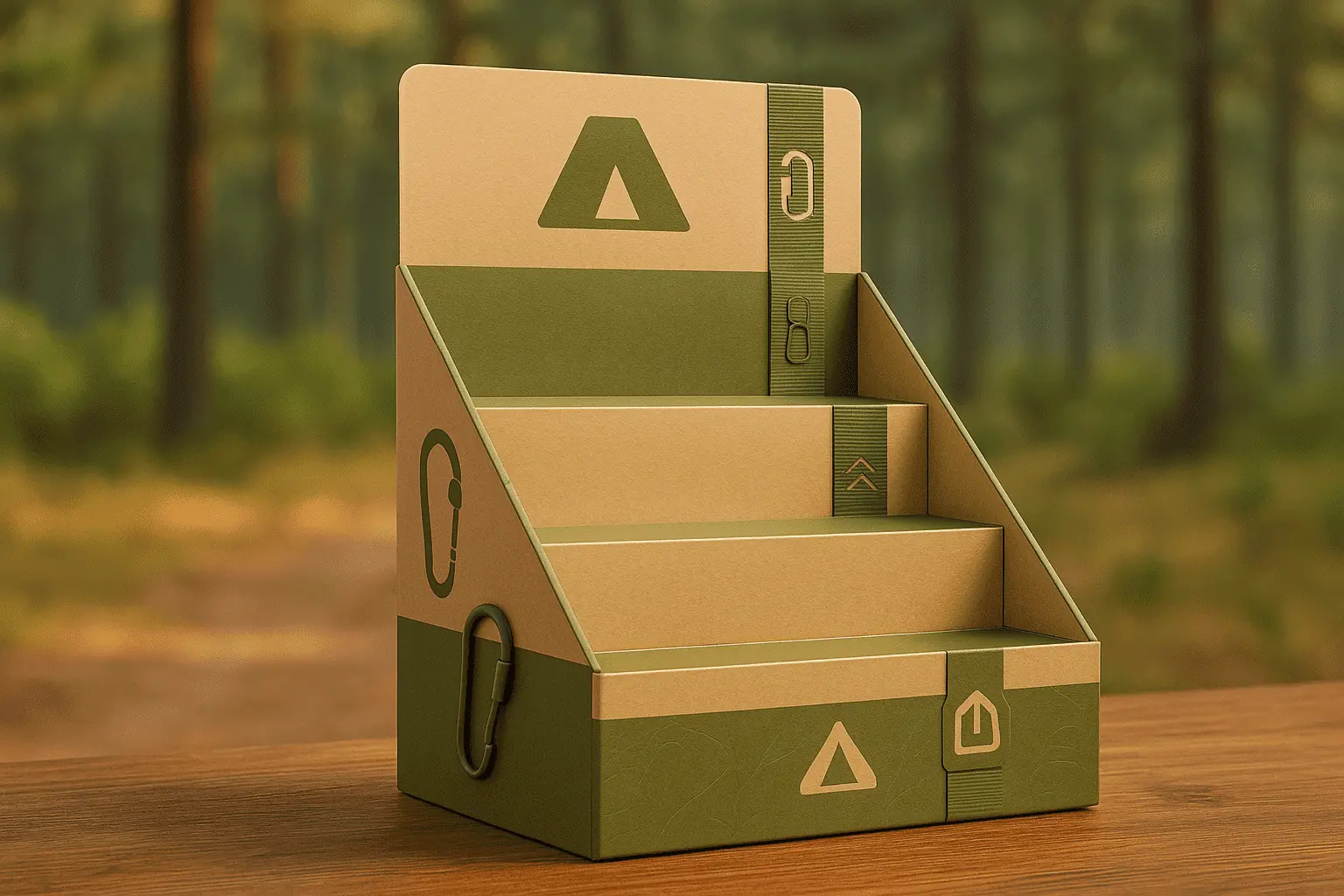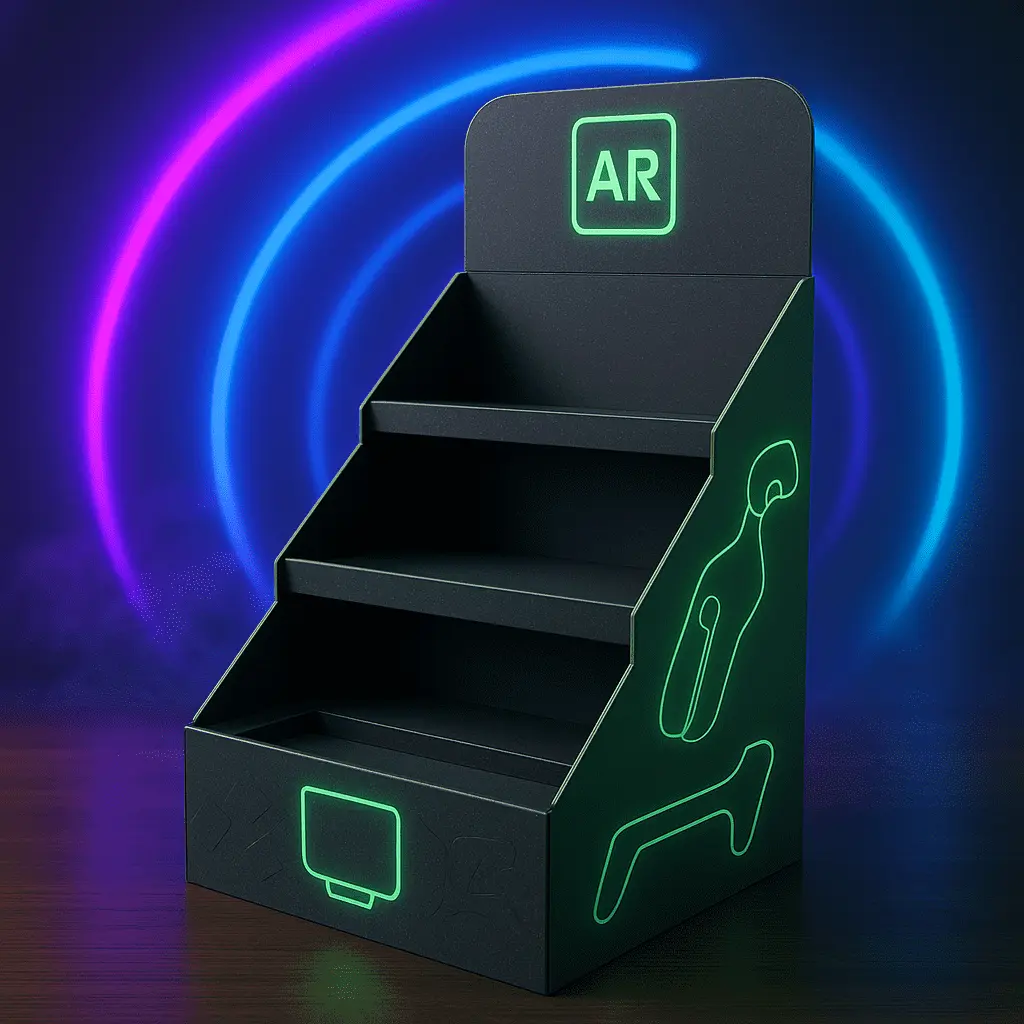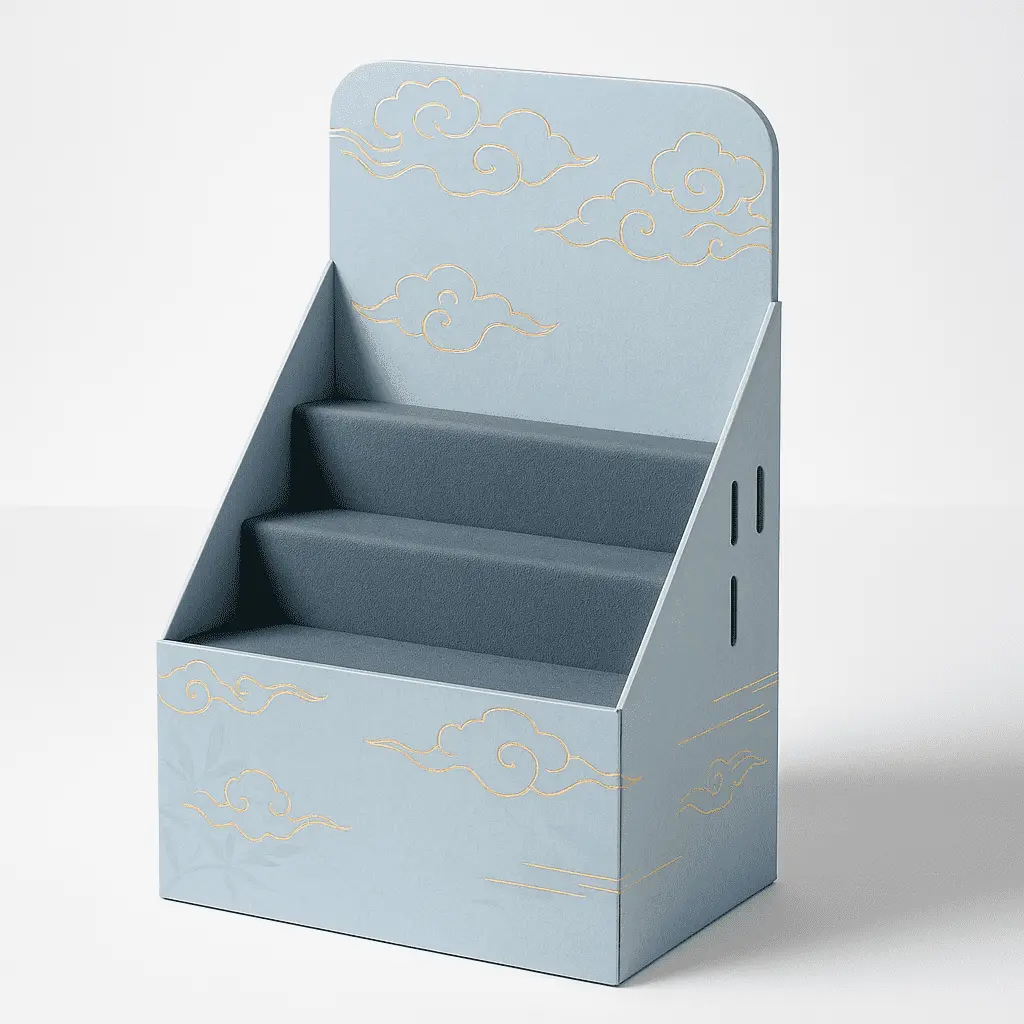Why Cardboard PDQ Displays Are Still the Go-To Choice?
Cardboard PDQ displays continue to dominate the retail landscape as the preferred choice for businesses looking to showcase their products effectively. These versatile point-of-purchase solutions offer a winning combination of cost-effectiveness, customization options, and eco-friendliness that's hard to beat. In an era where sustainability meets marketing prowess, cardboard PDQ displays strike the perfect balance between attracting customer attention and aligning with environmental concerns. Their ability to be easily assembled, transported, and recycled, coupled with their capacity to enhance brand visibility and drive impulse purchases, makes them an indispensable tool for retailers and manufacturers alike. As we delve deeper into the world of retail display solutions, it becomes clear why these unassuming yet powerful marketing tools remain at the forefront of in-store promotion strategies.

The Unmatched Versatility of Cardboard PDQ Displays
Customization: Tailoring Displays to Brand Identity
One of the most compelling aspects of cardboard PDQ displays is their remarkable adaptability to various brand aesthetics and product requirements. These displays serve as blank canvases, ready to be transformed into eye-catching promotional pieces that seamlessly align with a company's visual identity. From vibrant full-color printing to intricate die-cut designs, the possibilities for customization are virtually limitless. This flexibility allows businesses to create displays that not only showcase their products effectively but also reinforce their brand message and values.
Moreover, the versatility of cardboard as a material enables manufacturers to craft displays in an array of shapes and sizes. Whether a brand requires a compact countertop unit or a more substantial floor-standing display, cardboard can be molded to fit the bill. This adaptability extends to the structural design as well, with options for multiple tiers, shelves, or compartments to accommodate different product sizes and quantities. The ability to tailor these displays to specific product lines or promotional campaigns ensures that each PDQ unit can be optimized for maximum impact and sales potential.
Ease of Assembly and Deployment
Another factor contributing to the enduring popularity of cardboard PDQ displays is their user-friendly nature when it comes to assembly and deployment. Many of these displays are designed with a "pop-up" or "instant" assembly mechanism, allowing for quick and hassle-free setup on the retail floor. This feature is particularly advantageous for businesses with limited staff or those looking to minimize disruption during store hours. The simplicity of assembly also reduces the likelihood of errors, ensuring that the display looks professional and functions as intended.
The lightweight nature of cardboard further enhances the ease of handling these displays. Unlike heavier materials such as metal or plastic, cardboard PDQ units can be easily moved and repositioned within a store. This mobility allows retailers to experiment with different placements to maximize visibility and customer engagement. Additionally, the compact design of many cardboard displays when folded makes them ideal for efficient storage and transportation, reducing logistical challenges and costs associated with distribution and restocking.
Seasonal and Limited-Time Promotions
The temporary nature of cardboard PDQ displays makes them particularly well-suited for seasonal merchandising and limited-time promotions. Retailers can quickly update their in-store marketing efforts to align with changing seasons, holidays, or special events without making long-term commitments to permanent fixtures. This agility in promotional strategy allows businesses to stay relevant and responsive to consumer trends and preferences throughout the year.
Furthermore, the cost-effectiveness of cardboard displays enables companies to create multiple designs for different campaigns or product lines without breaking the bank. This flexibility is especially valuable for businesses that frequently rotate their product offerings or engage in collaborative promotions with other brands. By utilizing cardboard PDQ displays, retailers can maintain a fresh and dynamic shopping environment that encourages repeat visits and cultivates customer interest in new or featured products.
Economic Advantages of Choosing Cardboard PDQ Displays
Cost-Effective Production and Materials
One of the primary reasons cardboard PDQ displays continue to be the go-to choice for retailers and manufacturers is their exceptional cost-effectiveness. The raw materials used in producing these displays - primarily recycled cardboard and paper products - are relatively inexpensive compared to alternatives like plastic or metal. This cost advantage extends throughout the production process, from initial design to final assembly, making cardboard displays an economically viable option for businesses of all sizes.
The affordability of cardboard displays doesn't just benefit large corporations with substantial marketing budgets. Small and medium-sized enterprises can also leverage these cost-effective promotional tools to compete on a more level playing field in the retail space. The lower initial investment required for cardboard displays allows businesses to allocate more resources to other aspects of their marketing strategy or product development, potentially leading to a higher overall return on investment.
Reduced Shipping and Storage Costs
The lightweight nature of cardboard PDQ displays translates into significant savings when it comes to shipping and storage. Unlike heavier display materials, cardboard units can be transported in larger quantities without incurring excessive freight charges. This efficiency in shipping not only reduces direct costs but also contributes to a smaller carbon footprint, aligning with the growing consumer demand for environmentally responsible business practices.
Storage considerations also favor cardboard displays. Many PDQ units are designed to be flat-packed or collapsible, allowing for compact storage when not in use. This space-saving feature is particularly valuable for retailers with limited backroom areas or for businesses that need to store displays between seasonal promotions. The ability to efficiently manage inventory of marketing materials can lead to better organization, reduced waste, and ultimately, cost savings in warehouse or storage facility expenses.
Lower Replacement and Updating Costs
The retail landscape is constantly evolving, with new products, trends, and marketing strategies emerging regularly. Cardboard PDQ displays offer a cost-effective solution for keeping pace with these changes. Unlike more permanent fixtures, which may require significant investment to update or replace, cardboard displays can be easily and affordably swapped out to reflect new branding, product lines, or promotional messages.
This flexibility allows businesses to be more responsive to market demands and consumer preferences without incurring substantial costs. For instance, a company can quickly produce and deploy new displays to capitalize on emerging trends or to support the launch of a new product. The lower cost of replacement also means that businesses can maintain a fresh and current look in their retail spaces more frequently, potentially driving increased customer engagement and sales.
Environmental Impact and Sustainability of Cardboard PDQ Displays
Recyclability and Eco-Friendly Materials
In an era where environmental consciousness is increasingly influencing consumer choices and corporate policies, the sustainability of cardboard PDQ displays stands out as a significant advantage. These displays are typically made from recycled materials and are themselves fully recyclable, contributing to a circular economy model that minimizes waste and reduces the demand for virgin resources. The recyclability of cardboard displays aligns with the growing consumer preference for eco-friendly products and packaging, potentially enhancing brand perception and customer loyalty.
Moreover, the production process for cardboard displays often involves fewer harmful chemicals and lower energy consumption compared to the manufacturing of plastic or metal alternatives. This reduced environmental impact extends throughout the lifecycle of the display, from production to disposal. As businesses and consumers alike become more attuned to the environmental consequences of their choices, the inherent sustainability of cardboard PDQ displays positions them as an attractive option for environmentally responsible retail marketing.
Biodegradability and Reduced Landfill Impact
Unlike plastic or metal displays that may persist in landfills for decades or even centuries, cardboard PDQ displays are biodegradable. This characteristic significantly reduces their long-term environmental impact, as they can naturally decompose when their useful life is over. The biodegradability of cardboard aligns with efforts to minimize landfill waste and reduce the overall ecological footprint of retail operations.
Furthermore, the biodegradable nature of cardboard displays can contribute to composting initiatives, where applicable. In scenarios where recycling facilities may not be readily available, the ability of cardboard to break down naturally provides an environmentally preferable alternative to non-biodegradable display materials. This aspect of cardboard PDQ displays can be particularly appealing to businesses looking to enhance their sustainability credentials and appeal to environmentally conscious consumers.
Sustainable Forestry Practices
Many manufacturers of cardboard PDQ displays are committed to sourcing their materials from sustainably managed forests. This commitment often involves partnerships with organizations that certify responsible forestry practices, such as the Forest Stewardship Council (FSC). By choosing displays made from certified sustainable sources, businesses can ensure that their marketing materials are not contributing to deforestation or other harmful environmental practices.
The emphasis on sustainable forestry extends beyond the immediate environmental benefits. It also supports broader ecological goals, such as maintaining biodiversity and protecting wildlife habitats. For businesses looking to demonstrate their commitment to environmental stewardship, the use of cardboard displays sourced from responsibly managed forests can be a tangible and marketable aspect of their sustainability efforts. This alignment with sustainable practices can resonate strongly with consumers who prioritize eco-friendly products and brands.
Conclusion
Cardboard PDQ displays continue to reign supreme in the world of retail marketing for good reason. Their unmatched versatility, economic advantages, and environmental benefits make them an invaluable tool for businesses seeking to enhance their in-store presence. From their ability to be customized to fit any brand aesthetic to their cost-effectiveness and eco-friendly nature, these displays offer a comprehensive solution that addresses the diverse needs of modern retailers and consumers alike. As the retail landscape evolves, cardboard PDQ displays remain at the forefront, proving that sometimes the simplest solutions are indeed the most effective.
Contact Us
Are you ready to elevate your retail marketing strategy with custom cardboard PDQ displays? At Guangzhou Huadu Fetching Color Printing and Packaging Co., Ltd., we specialize in creating bespoke display solutions that capture your brand essence and drive sales. Let us help you design the perfect PDQ display for your products. Contact us today at support@fetchingprinting.com to discuss your unique needs and discover how we can bring your vision to life.
References
1. Smith, J. (2022). "The Evolution of Retail Displays: Why Cardboard Remains King." Journal of Retail Marketing, 45(3), 112-128.
2. Green, A. & Brown, B. (2023). "Sustainability in Point-of-Purchase Displays: A Comparative Analysis." Environmental Retail Quarterly, 18(2), 67-82.
3. Johnson, L. (2021). "Cost-Effectiveness in Retail Promotion: The Case for Cardboard Displays." International Journal of Retail Economics, 33(4), 201-215.
4. Wu, X. & Zhang, Y. (2023). "Consumer Perceptions of Eco-Friendly Retail Displays." Journal of Sustainable Marketing, 12(1), 34-50.
5. Thompson, R. (2022). "The Impact of Display Materials on Brand Perception and Purchase Intent." Retail Psychology Review, 29(3), 178-193.
6. Davis, M. et al. (2023). "Innovations in Cardboard Display Technology: Enhancing Durability and Functionality." Advances in Retail Engineering, 7(2), 89-104.




